In this step-by-step tutorial, we’ll show you how to enable the high and low heart rate notifications on your Apple Watch for life-saving notifications in critical moments.

Your Apple Watch helps you look after your heart. The heart rate sensor on the back of the watch measures your heart rate in the background every ten minutes or so.
The wearable can ping you when your heart frequency has exceeded or fallen below a specified threshold if you have been relatively inactive for the past 10 minutes. The watchOS operating system taps a combination of activities your watch records, and then matches it to your heart rate readings to trigger these notifications.
Turn on high and low heart rate alerts on your Apple Watch
1) Open the companion Watch app on your iPhone.
2) Scroll down the My Watch tab and tap the Heart option.
3) Tap High Heart Rate and choose a desired BPM threshold. You can choose between the following presets:
- Off
- 100 BPM
- 110 BPM
- 120 BPM
- 130 BPM
- 140 BPM
- 150 BPM
Most people with no heart condition should select a threshold value between 100 BPM and 120 BPM, depending on their age, fitness level, whether they smoke or not, and so forth.
4) Next, go back to the previous screen, tap Low Heart Rate, and choose one of the following:
- Off
- 40 BPM
- 45 BPM
- 50 BPM
For most people, the default threshold is about 40 BPM.
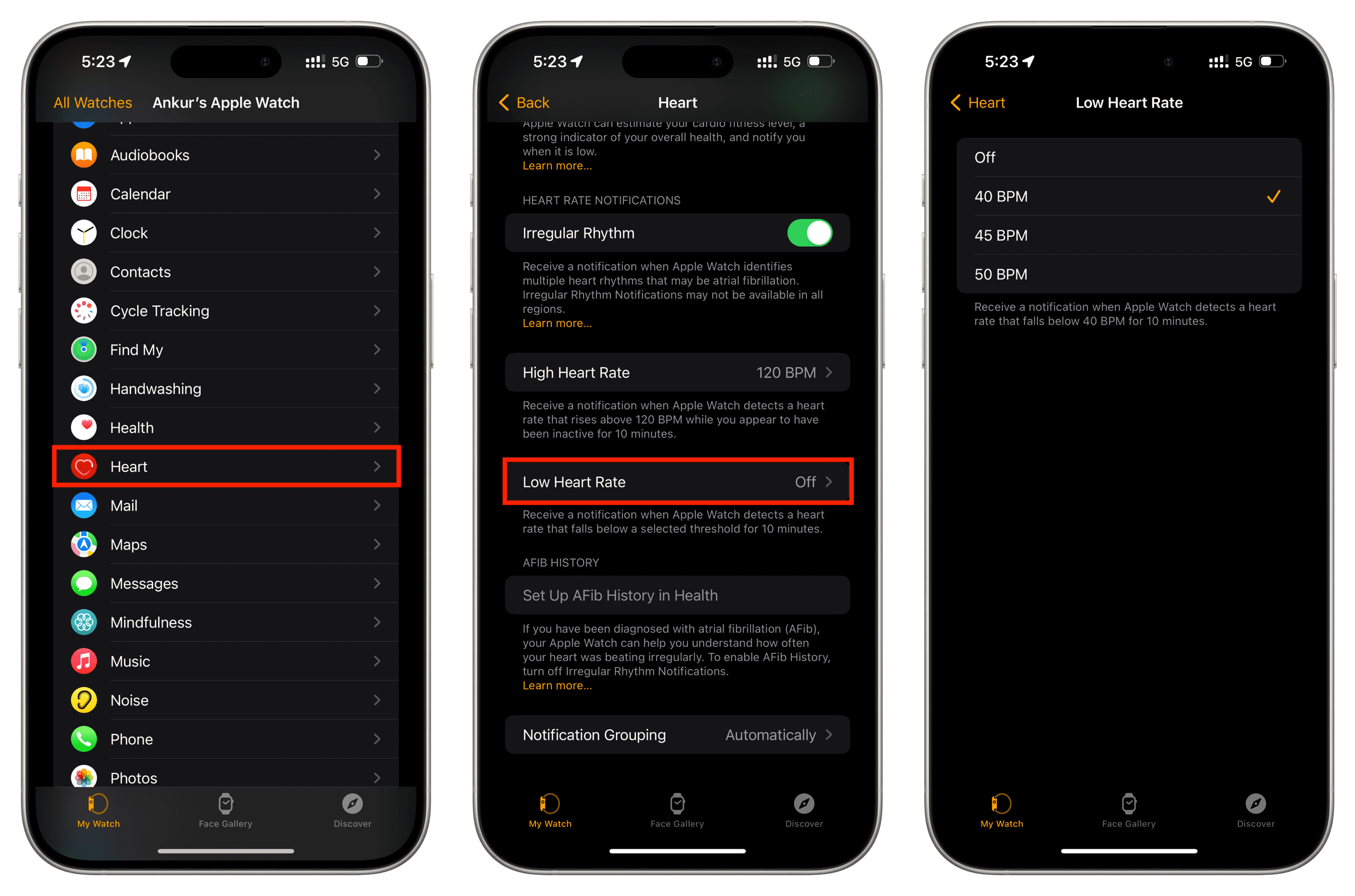
Now, the watch will intermittently analyze your heart rhythms in the background and send you a wrist notification if the heart frequency goes higher than the chosen threshold or falls below the set low heart rate threshold. It will do so only when you appear to have been inactive for at least 10 minutes.
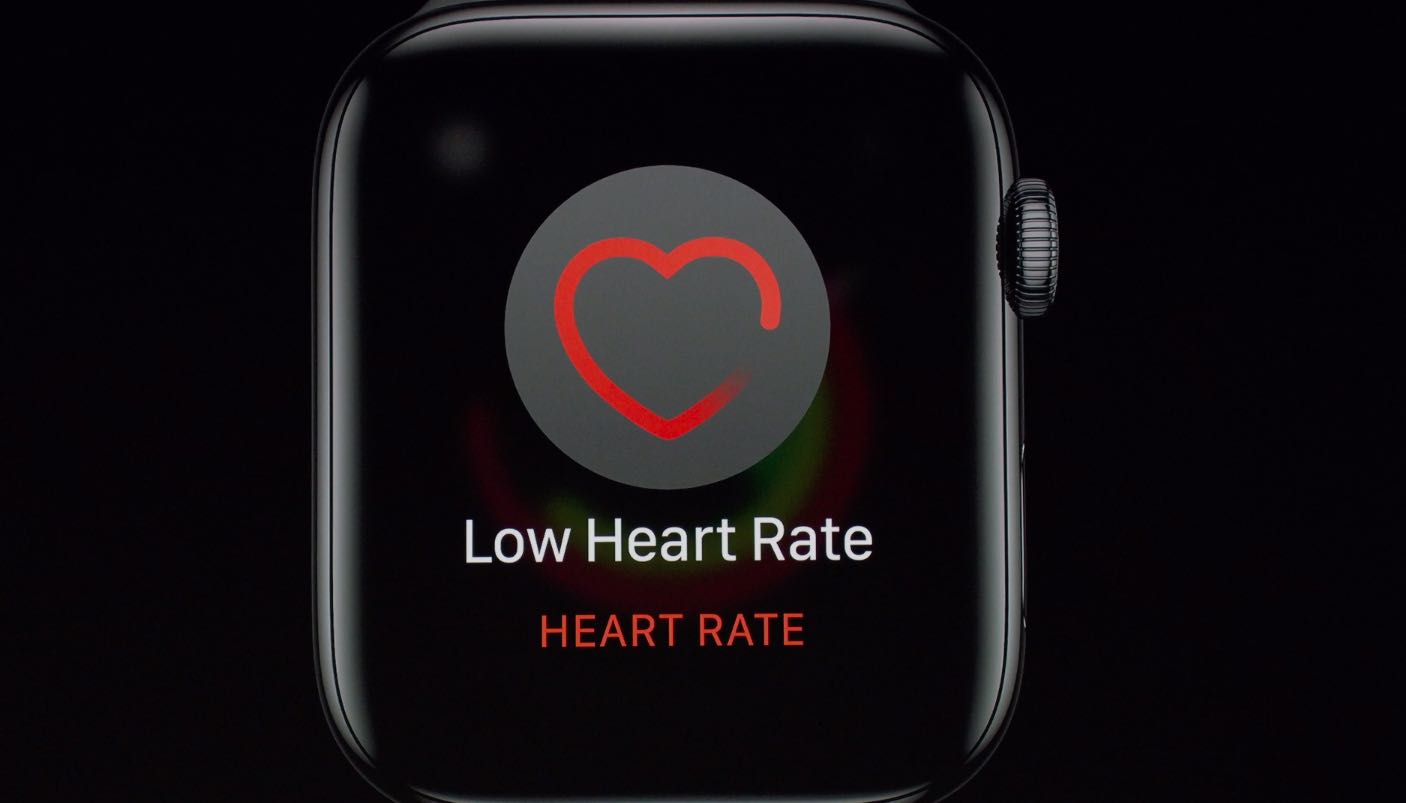
The device’s heart rate sensor uses infrared light to measure normal heart rate readings when you’re not working out, as well as elevated heart rates. By contrast, green LED lights on the sensor are polled when measuring your heart rate during workouts and Breathing sessions and to calculate the Walking Average and Heart Rate Variability measurements.
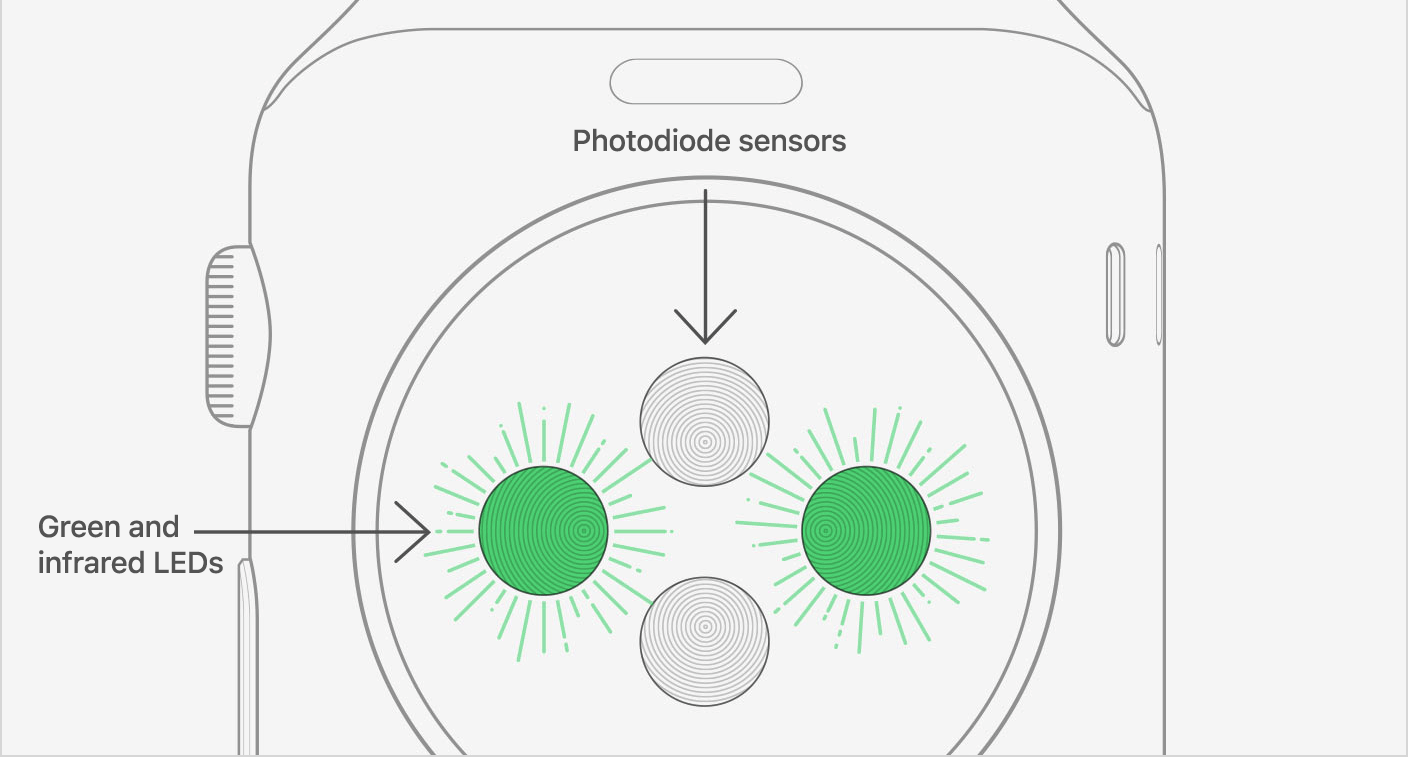
Keep in mind that the Apple Watch is meant to be a health accessory, not a true medical device.
About elevated heart rate
Receiving an Elevated Heart Rate alert may not necessarily mean that you should see your doctor because a number of factors can skew these readings one way or another. According to Apple, “some anomalies may appear in the displayed data, resulting in occasional heart rate measurements that are abnormally high or low.”
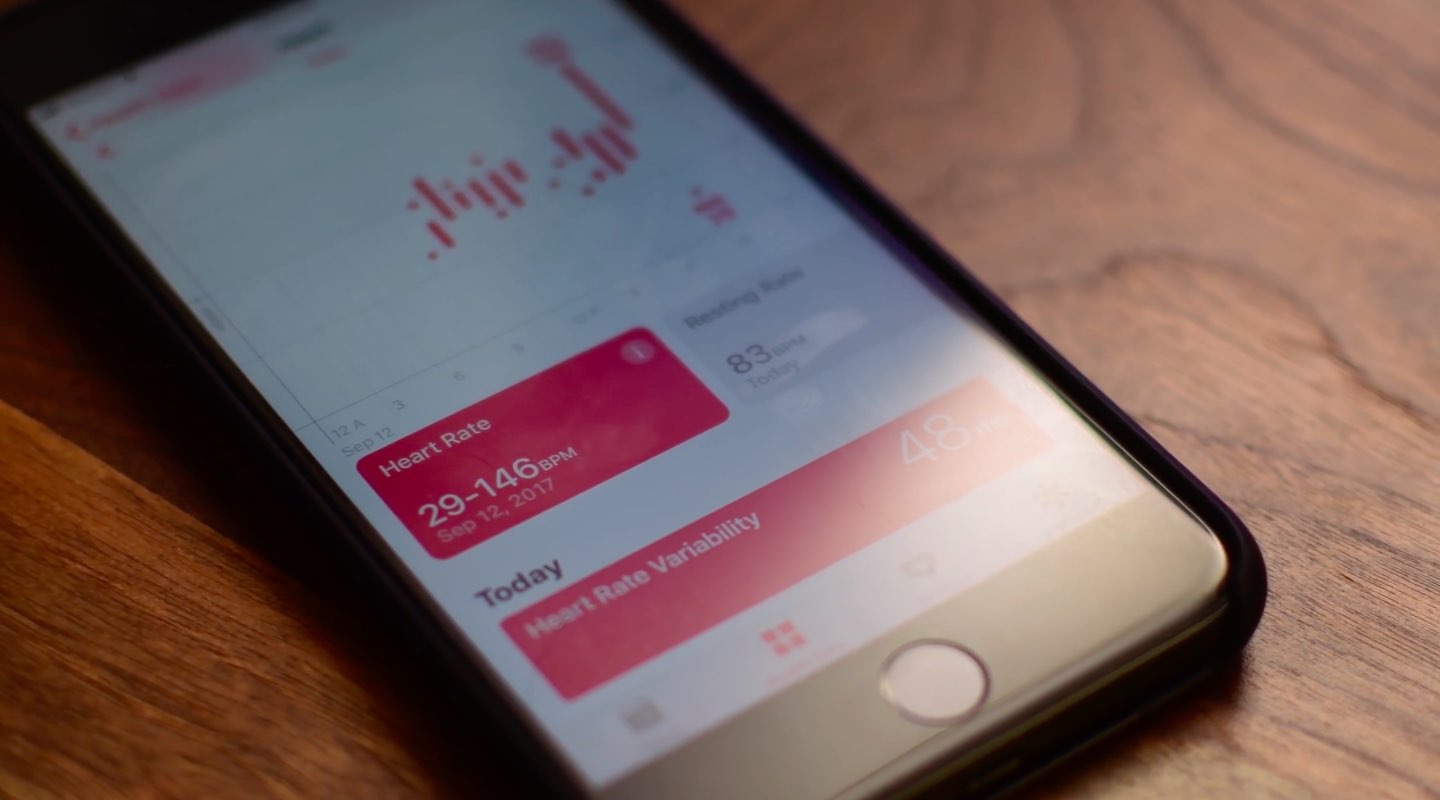
For instance, if you swing your arm with your watch for a few minutes while sitting idle, you may receive a high heart rate alert. It’s also normal for your heart rate to spike when you sleep.
If these alerts become a regular occurrence and the watch sensor is operating properly, you’re recommended to make an appointment with your doctor. “An elevated heart rate while inactive may indicate important changes in your health,” cautions Apple.
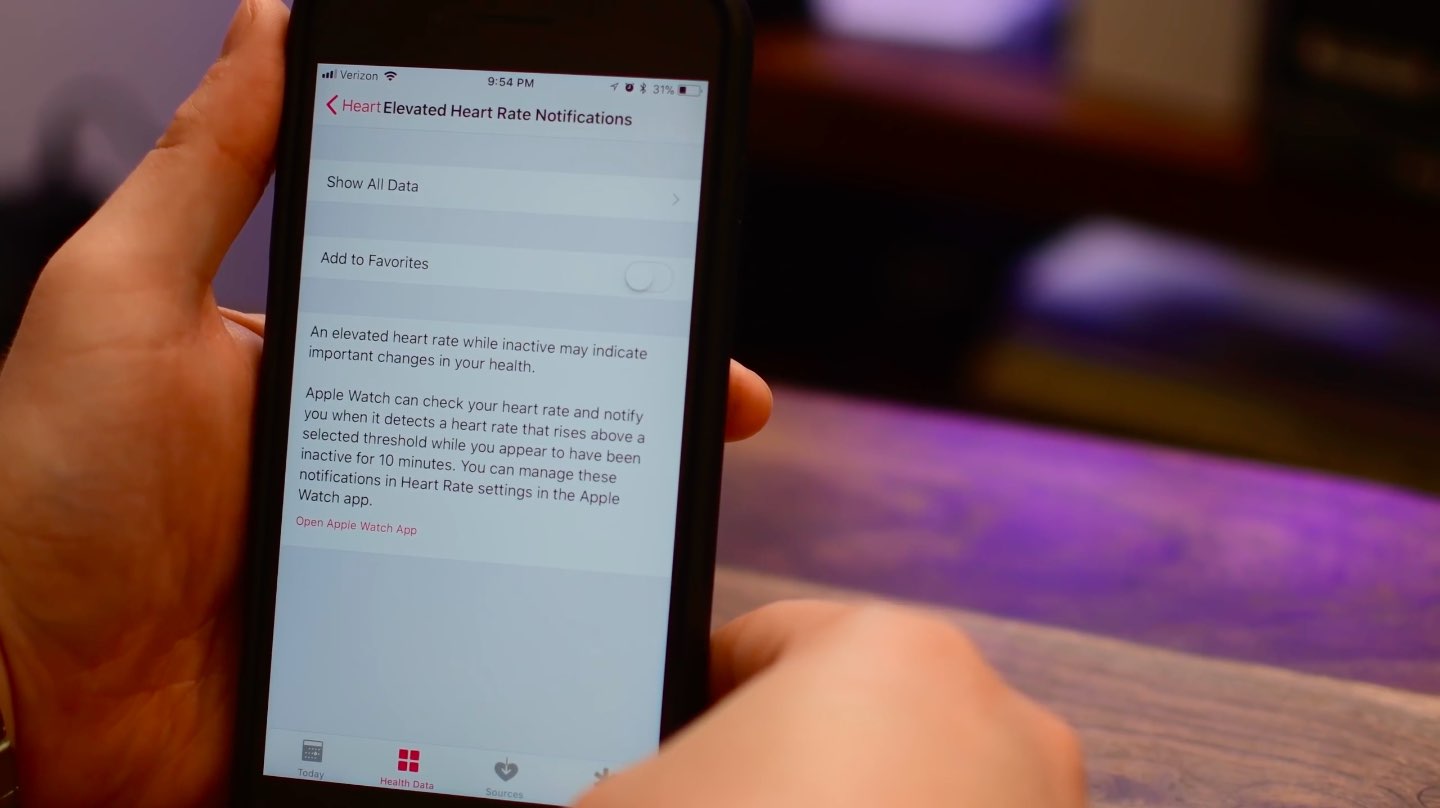
Even though I’m not a doctor, I’m perfectly aware that various heart arrhythmias, sudden spikes, and irregular heartbeats, such as atrial fibrillation, may point to an undiagnosed heart issue.
About low heart rate
Your heart rate frequency is not supposed to be on the high side if you haven’t moved at all for a few minutes. Likewise, your heart rate rhythm should remain below a certain BPM value while you appear to have been inactive for a period of 10 minutes. If repeated frequently, too low or too high BPM may point to serious health complications.
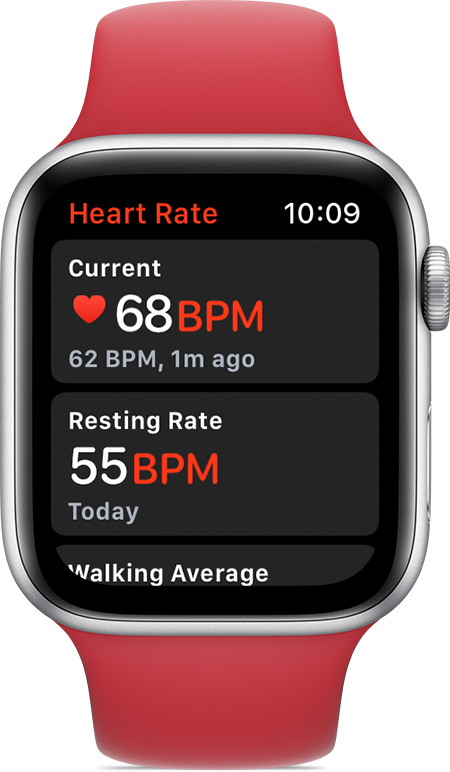
Low heart frequency when resting, and especially right after waking up, is generally a good sign because it means you aren’t tired and your heart is in good condition. A heart rhythm that appears to be too low might indicate that your heart is not pumping enough blood into the system. And that, boys and girls, can be a sign of something… serious.
Measure your BPM
You can check your heart rate at any time using the built-in Apple Heart Rate app on your Apple Watch. Additionally, specialized third-party apps dedicated to heart monitoring, like HeartWatch and Heart Analyzer, can also help.
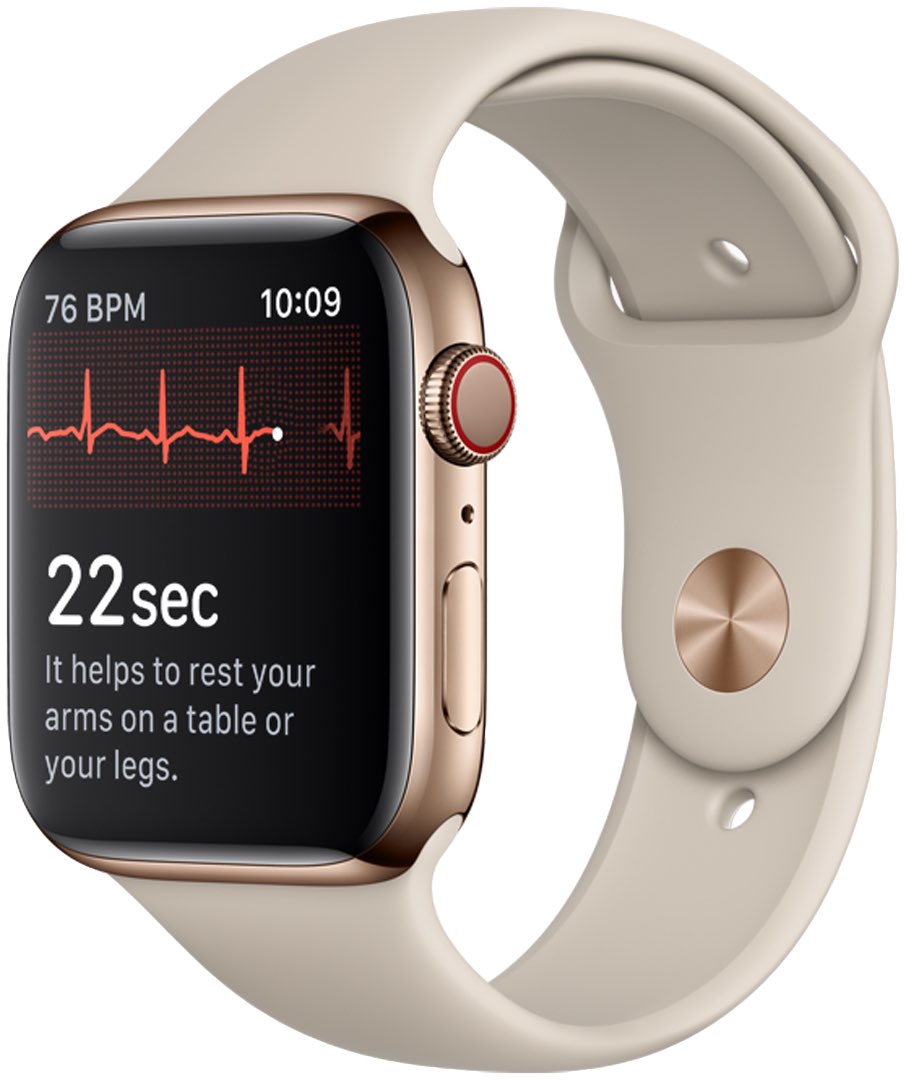
If you own a Series 4 or later with an electrical heart rate sensor that can take an electrocardiogram on the go, you can even receive a heart rhythm classification: whether your heart is beating in a normal pattern if there are signs of Atrial Fibrillation, a heart condition that could lead to major health complications and more.
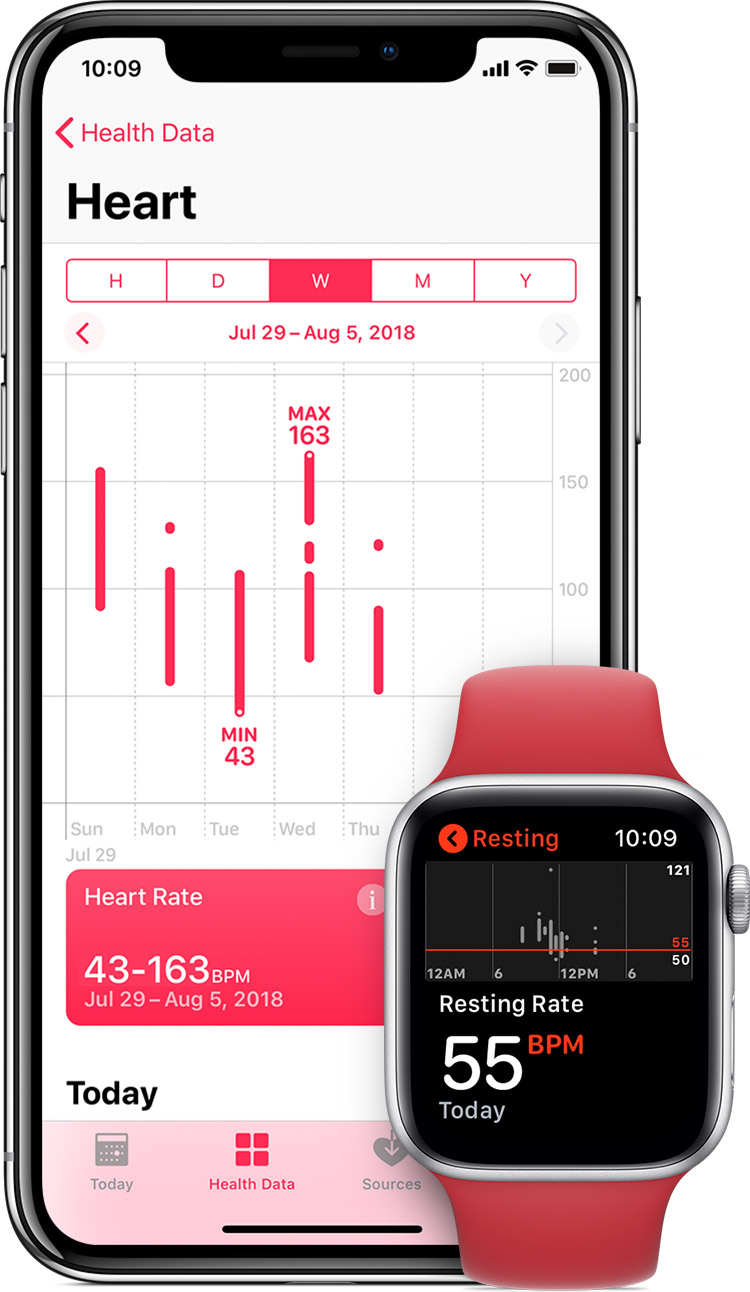
As a quick reminder, your Apple Watch uses an optical heart rate sensor built into the back crystal. The optical sensor supports a range of 30–210 BPM. It was designed to measure your heart rate continuously during the workout, plus for three minutes after the workout ends, and determine your workout recovery rate. It takes background readings throughout the day when you’re still and periodically when walking.
On a related note: How to measure your heart rate using Google Fit on iPhone